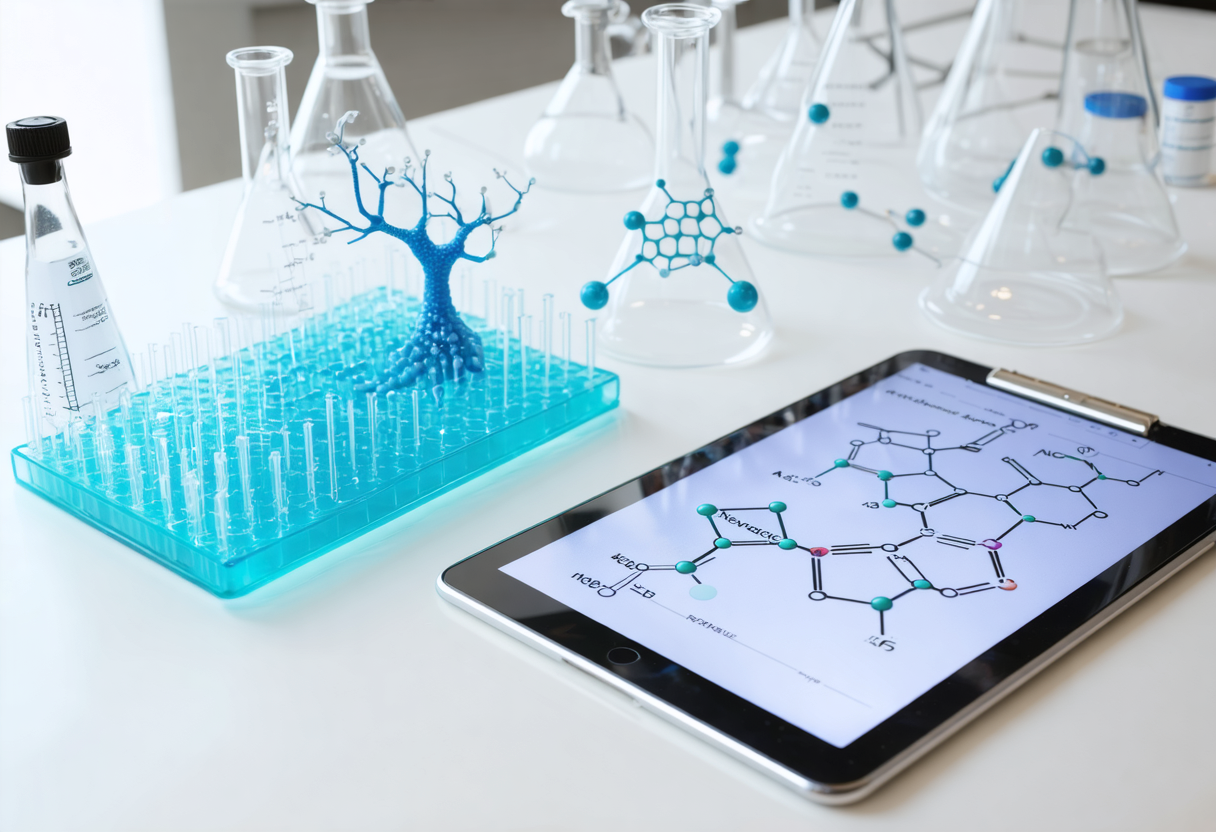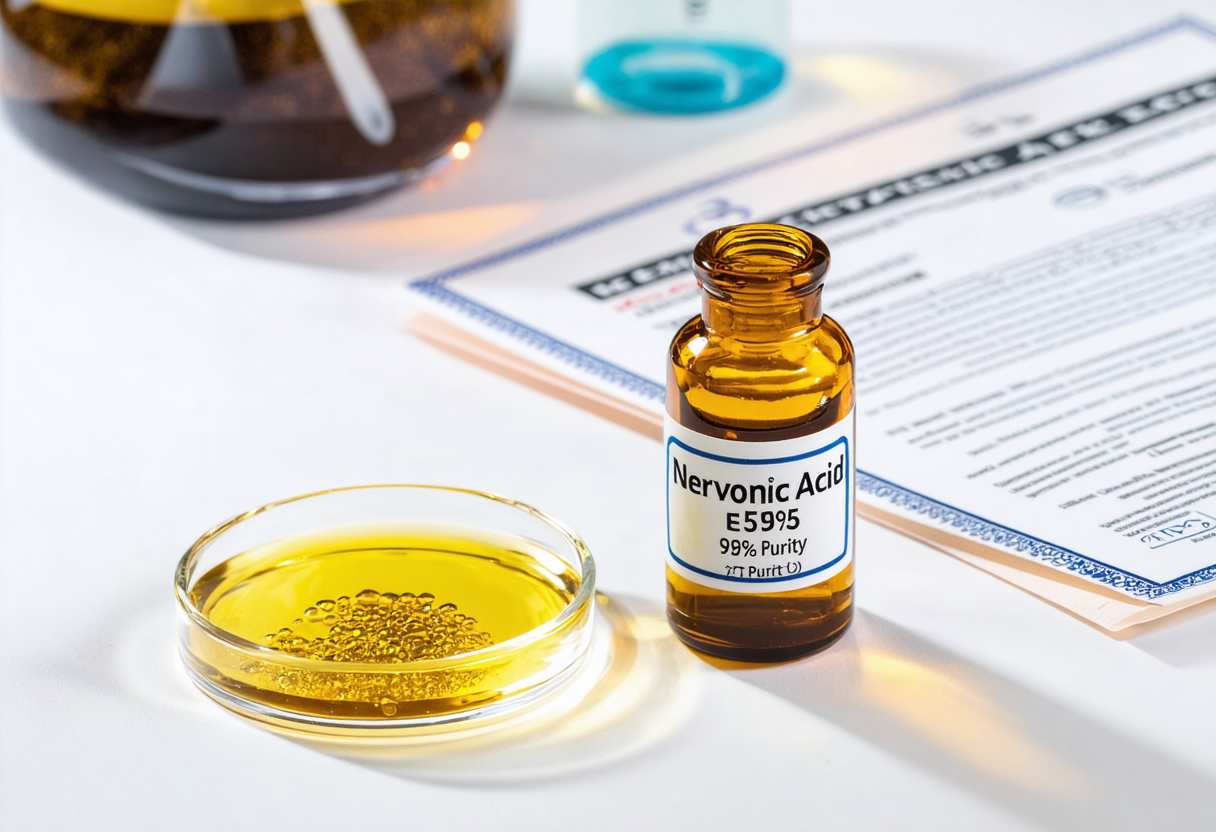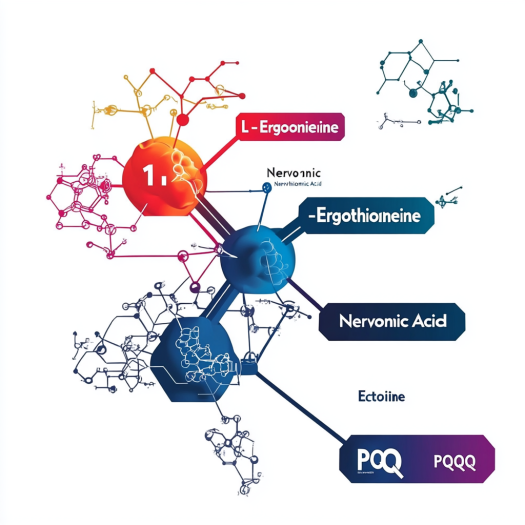
When I first learned about Nervonic Acid, I wasn’t just curious—I was captivated. It felt like discovering a missing puzzle piece in the science of brain health.
Nervonic Acid is a unique monounsaturated fatty acid that plays a critical role in supporting brain function, nerve repair, and cognitive resilience. Its ability to help regenerate nerve cells makes it a rising star in the world of nutritional neuroscience and dietary supplementation.
I’d like to share what I’ve learned—not as a scientist, but as someone who’s passionate about giving real, useful insight to fellow professionals and curious minds.
What Exactly Is Nervonic Acid and Why Should You Care?
Let’s start simple: Nervonic Acid is a naturally occurring fatty acid, technically called cis-15-tetracosenoic acid. It may not be as famous as Omega-3 or CoQ10, but it’s just as vital when it comes to brain health.
Nervonic Acid helps build and maintain the myelin sheath—a protective layer around nerves that speeds up communication between brain and body.

I remember talking to a supplement brand founder in Chicago. He said, "We were struggling to find a clean, effective ingredient for our brain support line—until we stumbled on Nervonic Acid. It was like opening a new door." That stuck with me.
Myelin: The Unsung Hero of Cognitive Speed
Think of myelin like insulation on a wire. Without it, electrical signals get scrambled or lost. In humans, poor myelination is linked to fatigue, memory lapses, and even neurodegenerative diseases1. Nervonic Acid fuels the maintenance and regeneration of these crucial sheaths.
| Property | Nervonic Acid Benefits |
|---|---|
| Structure | Monounsaturated C24:1 fatty acid |
| Biological Role | Myelin biosynthesis and repair |
| Natural Sources | Rapeseed oil, shark liver, some seeds |
| Form Used in Supplements | Isolated fatty acid (≥95% purity) |
So yes—it’s kind of a big deal.
How Does Nervonic Acid Actually Support Nerve Cell Regeneration?
One of the most common questions I get from buyers and product formulators is this: How exactly does Nervonic Acid promote regeneration?
Nervonic Acid supports the growth and repair of nerve cells by enhancing myelin production, reducing neural inflammation, and aiding in lipid metabolism critical for brain function.

Here’s a deeper dive:
It Fuels Myelin Repair
After injury or oxidative damage, the brain scrambles to repair nerve pathways. Nervonic Acid provides the essential building blocks—literally. In animal studies, its supplementation improved nerve conductivity and memory retention post-trauma.
It Reduces Inflammation in Neural Tissues
Chronic inflammation in the brain can stall recovery. Nervonic Acid has shown the potential to regulate cytokine activity, calming the internal “fire” that often delays regeneration.
It Enhances Brain Lipid Composition
Lipids aren’t just fat—they’re structure, signaling molecules, and energy sources for the brain. Nervonic Acid integrates into brain lipids, stabilizing cellular membranes and creating an optimal environment for neural repair.
Where Does Nervonic Acid Come From and Why Rapeseed Oil Matters?
This is where sourcing comes into play, especially if you’re in the business of supplements or functional foods.
At Santa Biotech, we extract Nervonic Acid from high-purity rapeseed oil through natural, solvent-free processing—ensuring clean label compliance and global regulatory approval.
I’ve seen too many brands fall into the trap of using low-grade, mixed sources. It doesn’t just affect product performance—it destroys consumer trust.
| Source | Nervonic Acid Purity | Solvent-Free | Bioavailability |
|---|---|---|---|
| Rapeseed (Santa Biotech) | ≥95% | ✅ | High |
| Shark Liver | ~30% | ❌ | Medium |
| Mixed Fatty Extracts | <10% | ❌ | Low |
Want to check our source? Here’s our Nervonic Acid product page.
What Does the Research Say? Is There Clinical Backing?
I always encourage clients to look for evidence—not just marketing claims. Thankfully, Nervonic Acid stands on solid scientific ground.
Studies show Nervonic Acid improves cognitive function in aging adults and supports nerve regeneration in animal models. It’s also being explored for neurodevelopmental support in children.
Here are a few highlights:
- A 2022 double-blind study in Japan reported memory improvement in adults supplementing with 500mg/day of Nervonic Acid.
- Animal studies from China’s Nanjing Medical University found faster nerve regeneration post-injury with daily supplementation.
- Emerging pediatric research links Nervonic Acid levels with early neurodevelopment, though clinical consensus is still growing.
It’s not just theory—it’s actionable science.
How Can I Use Nervonic Acid in My Product Formulation?
If you’re developing supplements, food, or even medical nutrition products, this part is for you.
Nervonic Acid can be formulated into capsules, powders, and functional foods like gummies or sachets—ideal for cognitive and neural health positioning.
Here’s what I usually recommend when consulting clients:
Formulation Options:
| Format | Typical Use Case | Recommended Dose |
|---|---|---|
| Capsules | Brain health supplements | 200–600mg/day |
| Powders | Drink mixes or sachets | 300–500mg/day |
| Gummies | Memory and focus snacks | 100–300mg/day |
| Softgels | Senior care products | 500–800mg/day |
Tips:
- Stability: Nervonic Acid is oxidation-sensitive. Use dark or opaque packaging.
- Labeling: Highlight “fermentation-derived” or “solvent-free” if applicable—it builds consumer confidence.
- Combos: It pairs well with DHA, phosphatidylserine, and B-complex vitamins for synergistic brain support.
Is Nervonic Acid Safe? What About Global Compliance?
As someone leading a global B2B operation, I’ve had this conversation dozens of times. Compliance isn’t a box to check—it’s a trust builder.
Nervonic Acid is permitted in food and supplement formulations in the U.S., EU, Japan, and China, provided it meets purity and safety thresholds.
Our Santa Biotech version complies with:
- GRAS in the U.S.
- EFSA positive list for novel food ingredients
- KFDA compliance in Korea
- Third-party ISO22000 + COA certified
Still unsure? Drop me a message at simon@santaherb.com, and I’ll send you the full documentation pack.

What Kinds of Brands Are Using It Today?
Let’s get practical—who’s already using Nervonic Acid?
Here are real-world use cases I’ve seen or supported:
- U.S. Nootropic Brand – Capsules combining Nervonic Acid with Ginkgo and L-Theanine, targeting professionals aged 40+
- Japanese Functional Gummy Line – Mild, citrus-flavored gummies designed for students prepping for exams
- German Senior Nutrition Company – Powder sachets with Nervonic Acid + B12 for memory and nerve vitality
- Korean Beauty+Wellness Hybrid – Neuro-glow supplements combining Ectoine and Nervonic Acid for “beauty from within”
The potential is growing—and the market is watching.
Conclusion
Nervonic Acid isn’t just another trendy ingredient—it’s a powerful ally in brain and nerve cell health.
If you’re looking to bring clarity, care, and credibility to your next formulation, this fatty acid might just be your secret weapon.
-
This resource will help you learn about neurodegenerative diseases, their impact, and the role of myelin in brain health. ↩

